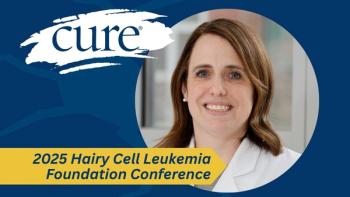
Movement, Moderation and Mindfulness: Being Proactive About Diet and Exercise
Exercise and nutrition are essential to improving a variety of facets revolving around the continuum of cancer — from prevention to diagnosis and treatment to survivorship care.
When following the continuum of cancer care, from prevention to diagnosis, treatment and survivorship, men and women should follow the M&Ms of fitness and nutrition: movement, moderation and mindfulness.
At the 11th Annual Joining FORCEs Against Hereditary Cancer Conference held in San Diego from Oct. 19-20, Jessica Clague DeHart, Ph.D., M.P.H., discussed the why and how of exercise and nutrition among those with hereditary risk for cancer and individuals facing the disease.
“The how (of diet and exercise) is becoming more and more important. It always amazes me that people don’t know the why still,” she said during a presentation at the conference, hosted in partnership with City of Hope. “Educating yourself on the why will help you help others to participate in the how (of diet and exercise).”
It is important to note that after not smoking, being at a healthy weight is the most important thing an individual can do to prevent cancer. In particular, it has been found that obesity is associated with malignancies such as esophageal, liver, kidney, stomach, colorectal, advanced prostate, post-menopausal breast, gallbladder, pancreatic, ovarian and endometrial cancers.
“It is estimated that excess body fat is a cause of more than 132,000 U.S. cancer cases every year,” said Clague DeHart, who is a visiting professor in the department of medical oncology at City of Hope and an assistant professor at Claremont Graduate University, both in California. “And yet, seven in 10 Americans are overweight or obese and only half are even aware of its link to cancer,” and worse, this discussion is not routinely addressed in genetic counseling sessions, she added.
In turn, obesity can result in cancer recurrence, death, comorbidities and treatment-related symptoms with a decrease in quality of life and treatment effectiveness. Therefore, Clague DeHart recommends for daily physical activity — which can be any movement of the body that is carried out by the muscles, and in turn, requires energy.
Moderate intensity activity can include walking briskly, water activities, bicycling slower than 10 miles per her, tennis, ballroom dancing and gardening. Vigorous activities include race walking, jogging or running; swimming laps; tennis; aerobic dancing; bicycling more than 10 miles per hour; jumping rope; heavy gardening; and hiking uphill or with a heavy backpack.
To tell if an individual is engaging in moderate or vigorous physical activity, Clague DeHart said the talk test can help: “If you can talk, but not sing, during the activity, then it is moderate activity; whereas, with vigorous activity, you will not be able to say more than a few words without pausing for a breath.”
With this, exercise and physical activity can increase quality of life, while also decreasing the risk for diabetes and heart disease, as well as lower body weight, excess estrogen from fat tissue, depression and anxiety, inflammation, pain and fatigue.
In addition, physical activity can also decrease the risk for breast cancer by 20 to 40 percent, colon cancer by 20 percent and endometrial cancer by 20 to 30 percent.
Overall, Clague DeHart recommends the following to reduce the risk for cancer:
- For adults, get at least 150 minutes of moderate-intensity activity and 75 minutes of vigorous-intensity activity each week (or a combination of these) for at least 10 minutes at a time, preferably spread throughout the week.
- For children and teens, get at least one hour of moderate- or vigorous- intensity activity each day, with good vigorous activity on at least three days of each week.
- For everyone, limit sedentary behavior such as sitting, lying down and watching TV or other screen-based entertainment.
“If you can’t remember anything else, just remember M&Ms: movement — get up and move — moderation and mindfulness,” Clague DeHart said. “See how you feel, make a note after you do something versus how you feel when you do something that is not good for you. I guarantee you’ll become addicted to that good feeling.”





